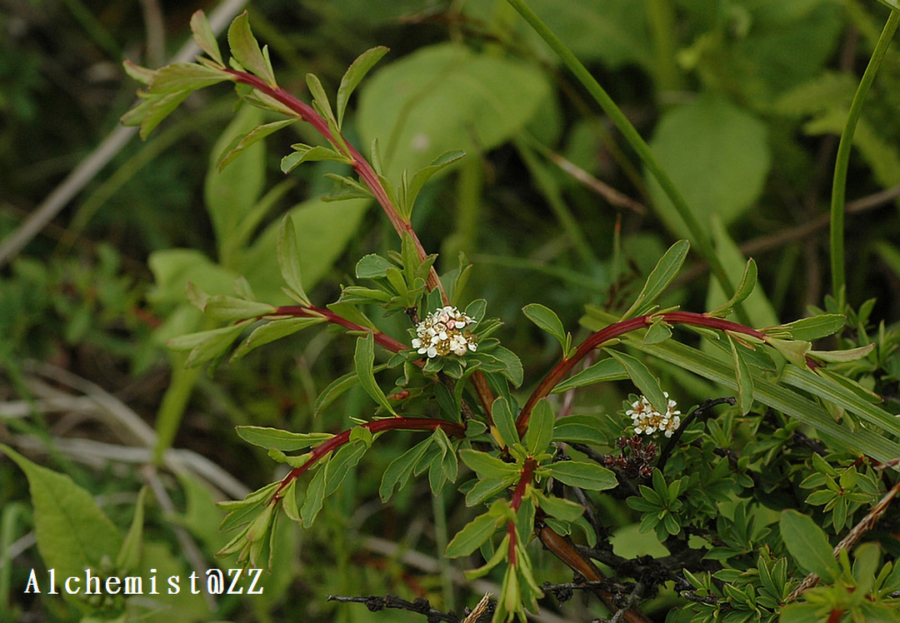- Scientific Name: Spiraea alpina Pall.
- Ref: Fl. Ross. 1:35. 1784
- English Common Name: alpine meadowsweet
- Chinese Common Name: 高山绣线菊 gāoshān xiùxiànjú
- Family: Rosaceae
- Genus: Spiraea
- Distribution: Thickets, valleys, open slopes, roadsides; 2000–4000 m. Gansu, Henan, Qinghai, Shaanxi, Shanxi, Sichuan, Xinjiang, Xizang [Mongolia, Russia, Sikkim].
- Photo: 07/14/2009, Mt. Taibai, Qinling
Shrubs to 1.2 m tall, much branched. Branches erect or spreading; branchlets red-brown, turning gray-brown when old, conspicuously angled, pubescent when young, finally glabrous; buds ovoid, small, with several scales, glabrous. Leaves mostly tufted; petiole very short or nearly absent; leaf blade gray-green and glaucous-bloomy abaxially, linear-lanceolate to oblong-obovate, 7–16 × 2–5 mm, glabrous on both surfaces, veins inconspicuous, base cuneate, margin entire, apex obtuse or acute. Racemes pedunculate, umbellate, 1.5–2(–3) × 1.5–2 cm, up to 20-flowered; pedicels 5–8 mm, glabrous; bracts linear, small, caducous. Flowers 5–7 mm in diam. Hypanthium campanulate, glabrous abaxially. Sepals triangular, 1–2 × 1.5–2 mm, erect or semispreading in fruit, apex acute. Petals white, obovate or suborbicular, 2–3 mm, about as broad as long, base shortly clawed, apex obtuse or emarginate. Stamens ca. 20, slightly shorter than to subequaling petals. Disk distinct, annular, 10-lobed. Carpels pubescent; styles shorter than stamens. Follicles spreading, glabrous or pilose on adaxial suture; styles subterminal, divergent. Fl. Jun–Jul, fr. Aug–Sep. (Flora of China)
